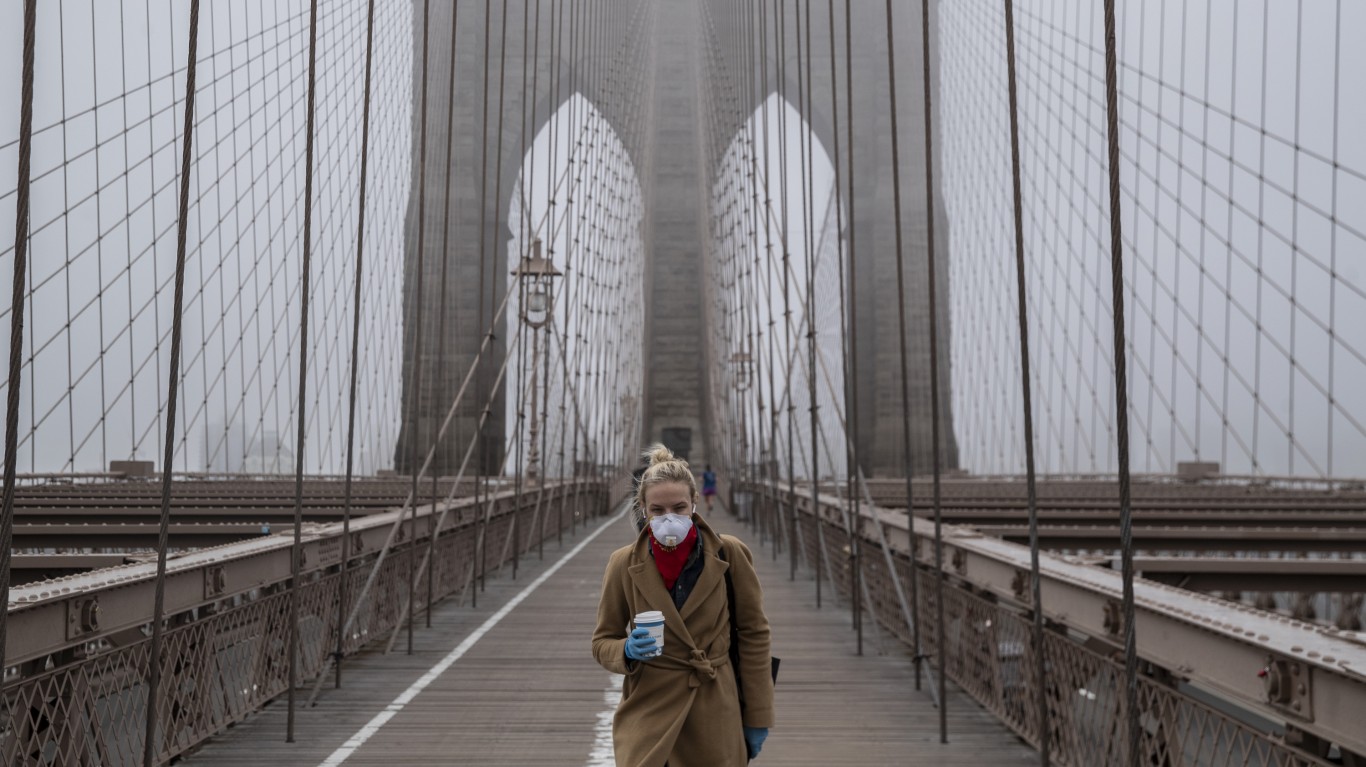
The U.S. jobs market was incredibly strong up until March, with 3.5% unemployment and the markets getting used to weekly jobless claims of just over 200,000 or so in each report. Then came the COVID-19 pandemic and a crashing economy for an instant recession. Now millions and millions of unemployed Americans have no opportunity to get a job for the time being.
When the U.S. Department of Labor reported that there were 2.981 million weekly jobless claims for the week of May 9, a weak stock market opening became even weaker before recovering. To say that nearly 3 million jobless claims does not matter may sound ludicrous. It probably seems insensitive. In this case, it is neither.
The only good news in reporting almost 3 million in weekly jobless claims is that the report was actually a drop of 195,000 from the prior week’s revised level of 3.176 million claims.
What the investment community, job seekers, employers and economists really need to be focused on is the number of continuing jobless claims, rather than just the initial claims. This is what we have referred to a decade ago as the army of the unemployed during and after the Great Recession. While continuing claims is reported with a one-week lag, this is the best picture for a broad-based view of the total number of jobless people in America.
Last week’s Employment Situation report from the Labor Department showed that the official unemployment rate hit 14.7% in April. The nonfarm payrolls also contracted by about 20.5 million jobs in the month of April. It was the largest month-over-month increase in the history of the payrolls report, and the total number of unemployed people rose by 15.9 million to 23.1 million in April.
The biggest issue to consider is that the official payrolls report is less important today than the most recent continuing jobless claims report. The Labor Department has a reference cut-off date of the 12th day of each month for tabulating the unemployment rate and payrolls data. This latest continuing claims was for the week ending on May 2 rather than April 12, so it has nearly three weeks worth of more current data about the jobs market.
The advance seasonally adjusted insured unemployment rate was reported as 15.7% for the week ending May 2, and the continuing claims of 22,833,000 was an increase of 456,000 from the previous week’s revised level (which was revised down by 270,000 people).
It is likely that the real unemployment rate is above 20%, and there have been roughly 36 million total jobless claims since the wave started. It is also becoming harder to bet on a V-bottom recovery in the broad economy. Despite those atrocious numbers, which may not have even seen the worst levels yet, there are at least some hopes that the wave has crested.
Last Friday’s unemployment report also showed that the number of unemployed persons who reported being on temporary layoffs rose roughly tenfold to 18.1 million, and the number of permanent job losses increased by 544,000 to 2.0 million in April. Government employment lost 980,000 jobs, led by 801,000 losses in local government, and that is included in the overall numbers.
If you refer back to this latest weekly report, the Labor Department indicated that the total number of people claiming benefits in all programs for the week ending April 25 was 25,363,208, an increase of 6,443,777 from the previous week.
When all these weekly numbers get referenced against a prior month’s report, it looks as though the jobs market is getting much worse. Looking at the more recent data against the prior weekly reports shows another picture. It is far from a pretty picture, but it is one that may be showing some signs of life.
What likely is happening is that the retail locations and restaurants that closed or were forced to close as nonessential businesses, as well as those who could not perform what were deemed nonessential services, have been mostly reflected in the current data.
In no way should that be interpreted as an “all clear” sign, nor that the jobs market is about to revert to normal. That said, the economy is gradually being reopened for business, even if this is going to be very far short of business as usual and even if there are obvious risks in reopening the economy. Millions of workers also still are working from home.
Another issue that is helping out is that the Small Business Administration has continued to fund the loans from the Paycheck Protection Program (PPP) that was designed to reinstate millions of jobs. The SBA’s press release from May 3 signaled that the two combined rounds of PPP loans had seen over 3.8 million loans already processed and that the total funding was above $500 billion in less than a month. The PPP also gives businesses until June 30 to get their payrolls back to normal for business owners to get loan forgiveness, and that forgiveness is predicated on at least 75% of each loan’s funding going directly to employee paychecks.
The long and short of the matter is that more employees appear to be heading back to work. After back-to-back weekly jobless claims of 6 million in late March and the first week of April, the weekly claims have shown another five consecutive drops. The numbers are still ghastly compared to the past, but they are becoming less ghastly.
We have said multiple times that the stock market is not the economy and that the economy is not the stock market. What does tend to occur is that the stock market action tends to act as a live-money voting system (or betting) for where the economy will be in the coming months. To prove the point, the stock market’s V-bottom bounce in the Great Recession was in March of 2009. Jobless claims peaked at about 665,000 on the last weekly report of March, and the unemployment rate peaked at 10.0% in October of 2009.
It is impossible to say that the worst is over. There are serious risks that there will be a second wave of new COVID-19 cases as people start getting back together and heading back to work. There are risks that employers won’t be able to maintain their current payrolls later this summer if business is not returning to at least some form of normalcy. And, of course, there are risks that yet another wave of cases arrives in the fall of 2020.
The stock market had seen a correction of more than 5% this week, but the additional 400-point drop of almost 2% had turned into a 100-point gain on the Dow by the early afternoon trading on Thursday.
In 20 Years, I Haven’t Seen A Cash Back Card This Good
After two decades of reviewing financial products I haven’t seen anything like this. Credit card companies are at war, handing out free rewards and benefits to win the best customers.
A good cash back card can be worth thousands of dollars a year in free money, not to mention other perks like travel, insurance, and access to fancy lounges.
Our top pick today pays up to 5% cash back, a $200 bonus on top, and $0 annual fee. Click here to apply before they stop offering rewards this generous.
Flywheel Publishing has partnered with CardRatings for our coverage of credit card products. Flywheel Publishing and CardRatings may receive a commission from card issuers.
Thank you for reading! Have some feedback for us?
Contact the 24/7 Wall St. editorial team.
 24/7 Wall St.
24/7 Wall St.

